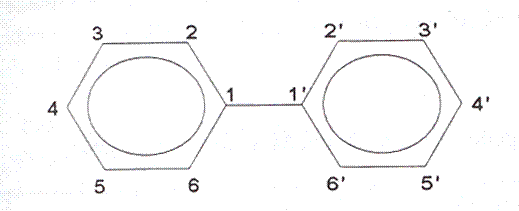Prof. P. A. Christensen
Home
Research and 3rd strand areas
News and recent publications
Vacancies
Information for group members
Clarizon Ltd
Services to business
Updated: 28 Jan 09
|
PolyChlorinated Biphenyls or PCBs:

- A group of 209 individual chlorinated biphenyls (‘congeners’) with the positions 1 - 6 and 1' - 6' on the two rings occupied by chlorine atoms.
- Were typically manufactured as mixtures of 60 to 90 different congeners
- Highly toxic
- Used as dielectrics, coolants and lubricants in electrical transformers and other electrical equipment, weatherproofers, and to prolong residual activity of pesticides. Usually released to the environment as a mixture in which other chemicals are also present.
- In the concentrated form, PCBs are either oily liquids or waxy solids with no discernable taste or odor.
- As the number of chlorines in a PCB mixture increases the flash point rises and the substance becomes less combustible. Also, PCBs with large numbers of chlorines are more stable and thus resistant to biodegradation.
- The most highly favored PCBs tended to be the ones with large numbers of chlorines: these congeners are also proving to be the ones that present the greatest environmental and health risks.
Home.....HDH.....Papers on HDH
|



